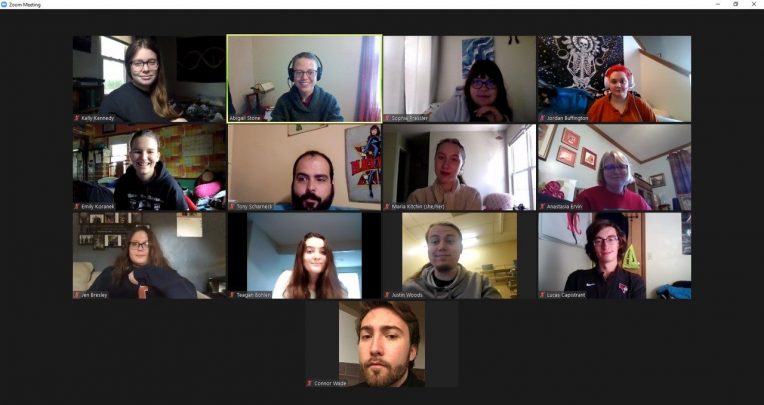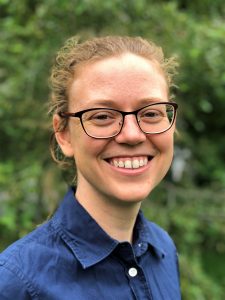Assistant Professor of Anthropology Dr. Abigail Stone was prepared to teach her typical lab course—where students study the archaeology of animal bones—until the coronavirus (COVID-19) pandemic disrupted her curriculum.
“The lab class was Zooarchaeology, and we would look at archaeological remains from a site here in McLean County,” said Stone. “That requires hands-on experience; you can’t identify bones over Zoom.”
The lab where Stone and her students would typically work was deemed too small to support physically distanced learning. Once summer arrived, Stone realized she would need to replace that course with one that could be taught online.
Fortunately, she was enrolled in a course design cohort offered by the Center for Teaching, Learning, and Technology (CTLT) over the summer.
“I was going to design a course on African archaeology, which is one of my specialties, but I decided that I wanted to teach a disease class,” said Stone. “Diseases are definitely omnipresent, and everyone’s thinking about disease right now. As an archaeologist, I wanted students to explore the role of diseases in the past and how diseases have transformed society in various ways.”
Stone’s moment of clarity led to the new course Plagues, Pandemics, and People. “A lot of our archaeology classes are looking at stuff that happened a long time ago,” said Stone. “Being able to address timely issues as an archaeologist is really exciting. I’m making all of my students ‘guinea pigs’ in this new class.”
Laura Erickson has enjoyed the opportunity to be one of the first 15 students to navigate the course. “It’s kind of fun that way,” said Erickson, a first-year graduate student from Grant Park. “It really feels like we’re all in it together, and it almost feels like we’re designing the course, too.”
The course is a seminar, meaning that Stone does not lecture often as the course involves readings and discussions. The students have analyzed diseases such as malaria and the bubonic plague through the lens of history, culture, and genetics.
“I really enjoy hearing the questions that students come up with because there are 15 different perspectives,” said Stone. “We’ll have multiple hands being raised, and students really wanting to talk and be engaged.”
Erickson has taken a handful of online courses in the past, but she credits Stone’s course as being one of the most immersive. “It’s nice because we still have the in-class discussions that we would normally,” said Erickson. “We can still have engaging, real-time conversations as opposed to just responding in forums.”
To get the most out of an online course, Erickson stresses the importance of participating in discussions. “Discussions are really where you draw what you’re learning from,” said Erickson. “Discussions will make the class more fun and interesting for you, and they will also help keep you on track and motivated.”
Additionally, Erickson also recommends open communication with professors and classmates. “This is a new experience for everybody,” said Erickson. “If you’re having issues with being online or being isolated, definitely talk to your professors or classmates. They’re willing to help.”
As the midway point of the semester nears, Stone and her students feel that the class has gone well considering the circumstances. What’s Stone’s secret to a successful course?
Flexibility.
“Things change; there’s always going to be unexpected complications,” said Stone. “For a course to go well, you have to be flexible.”
Apply now for 2021.


